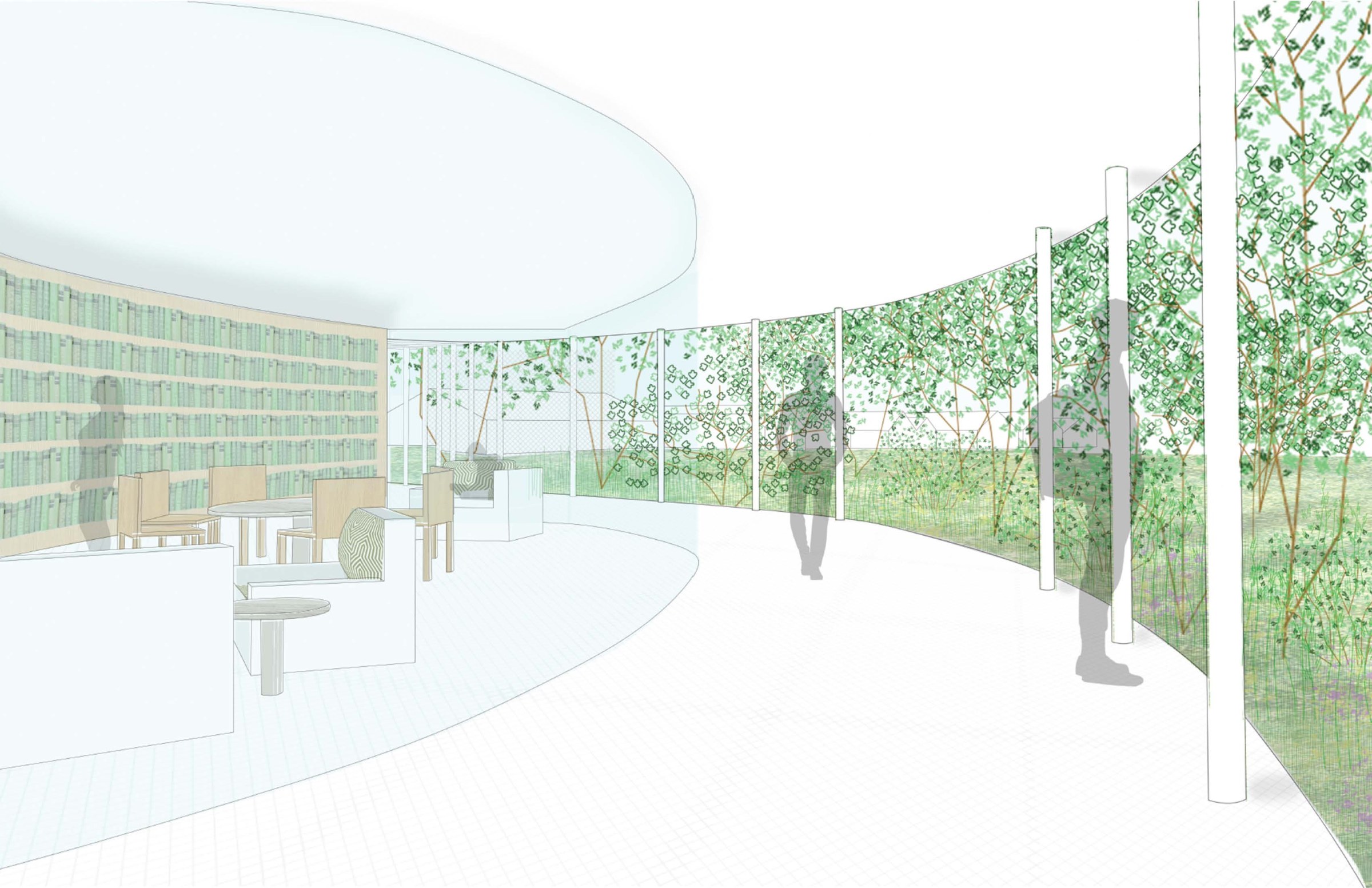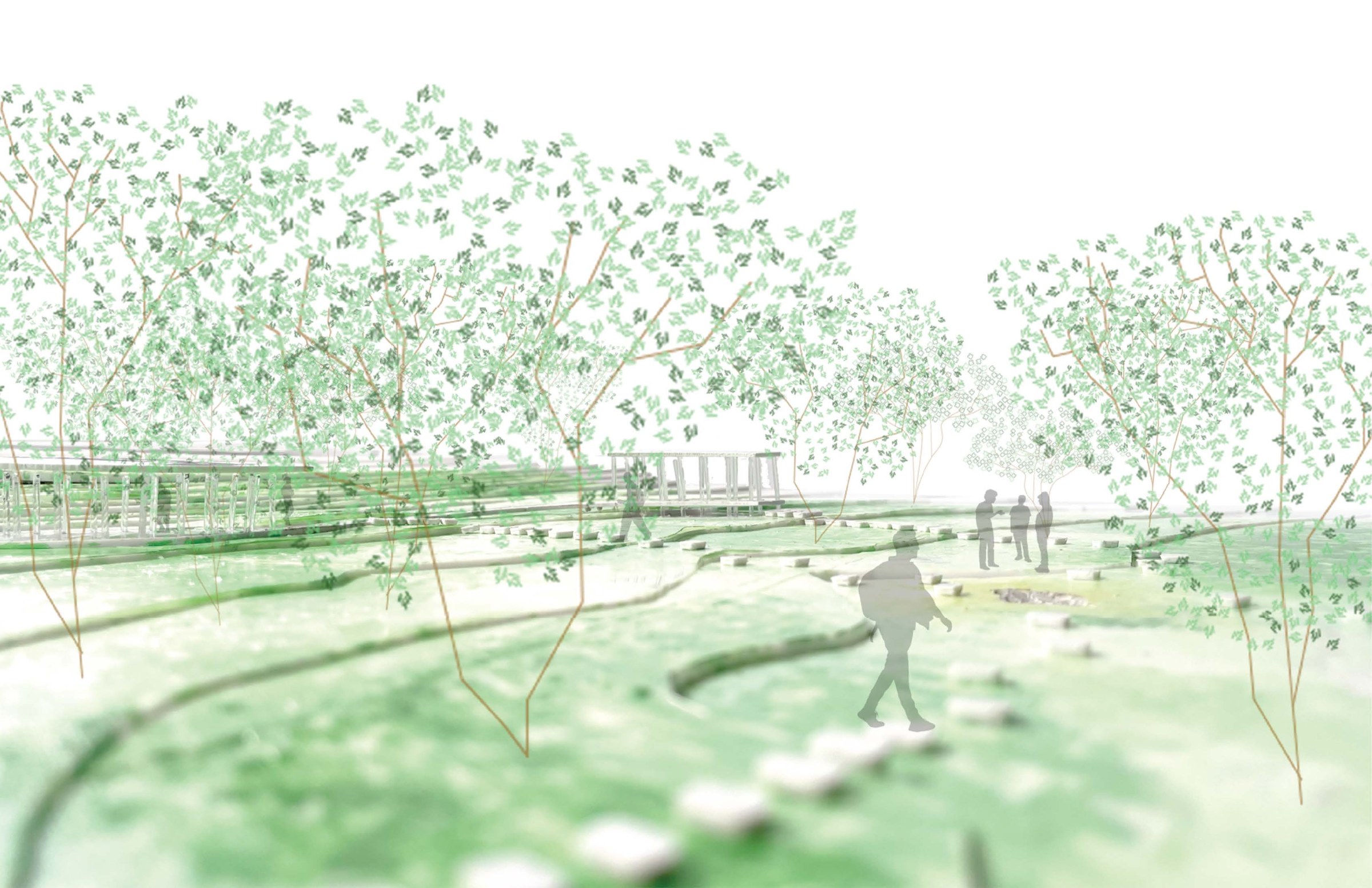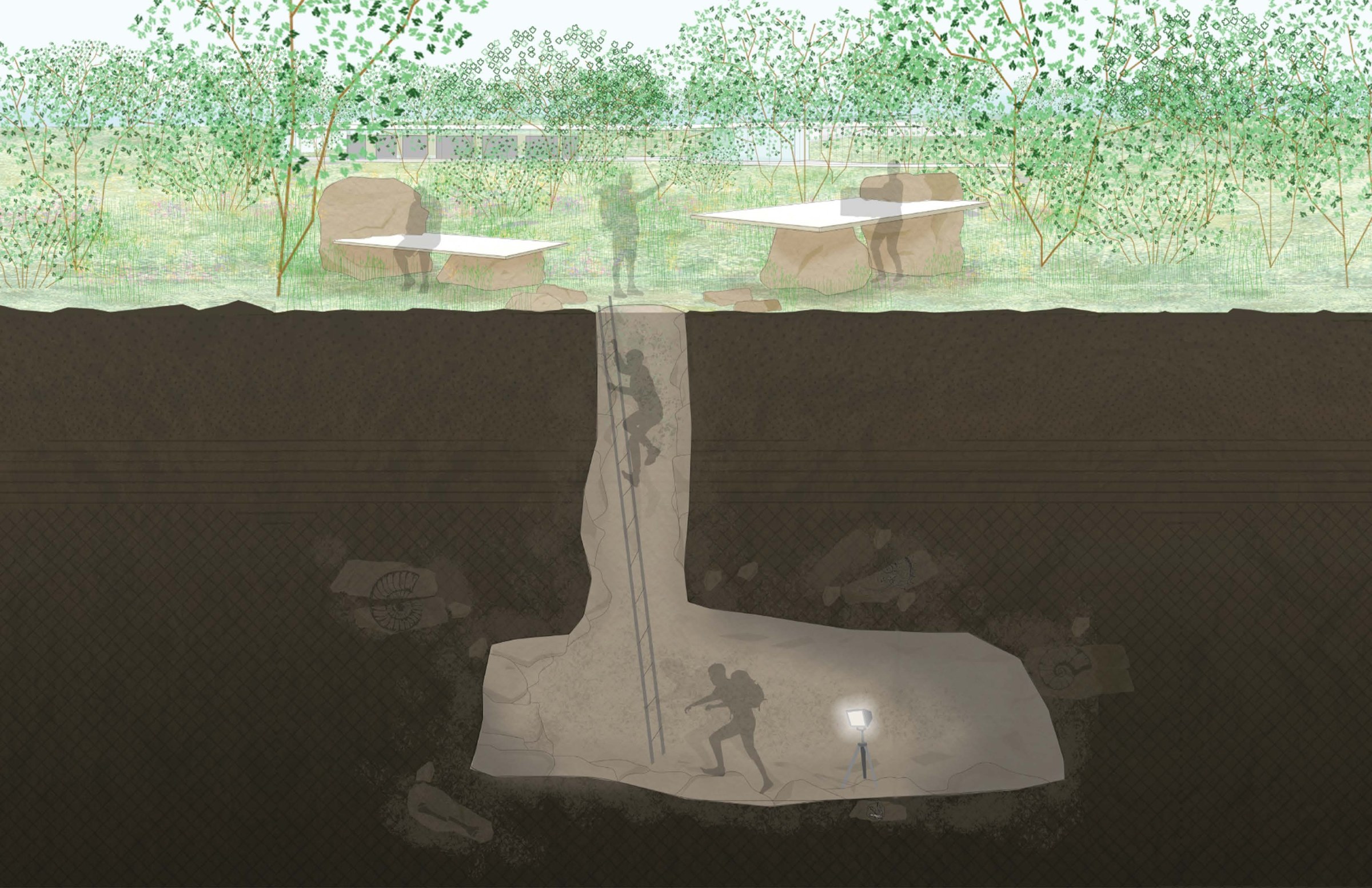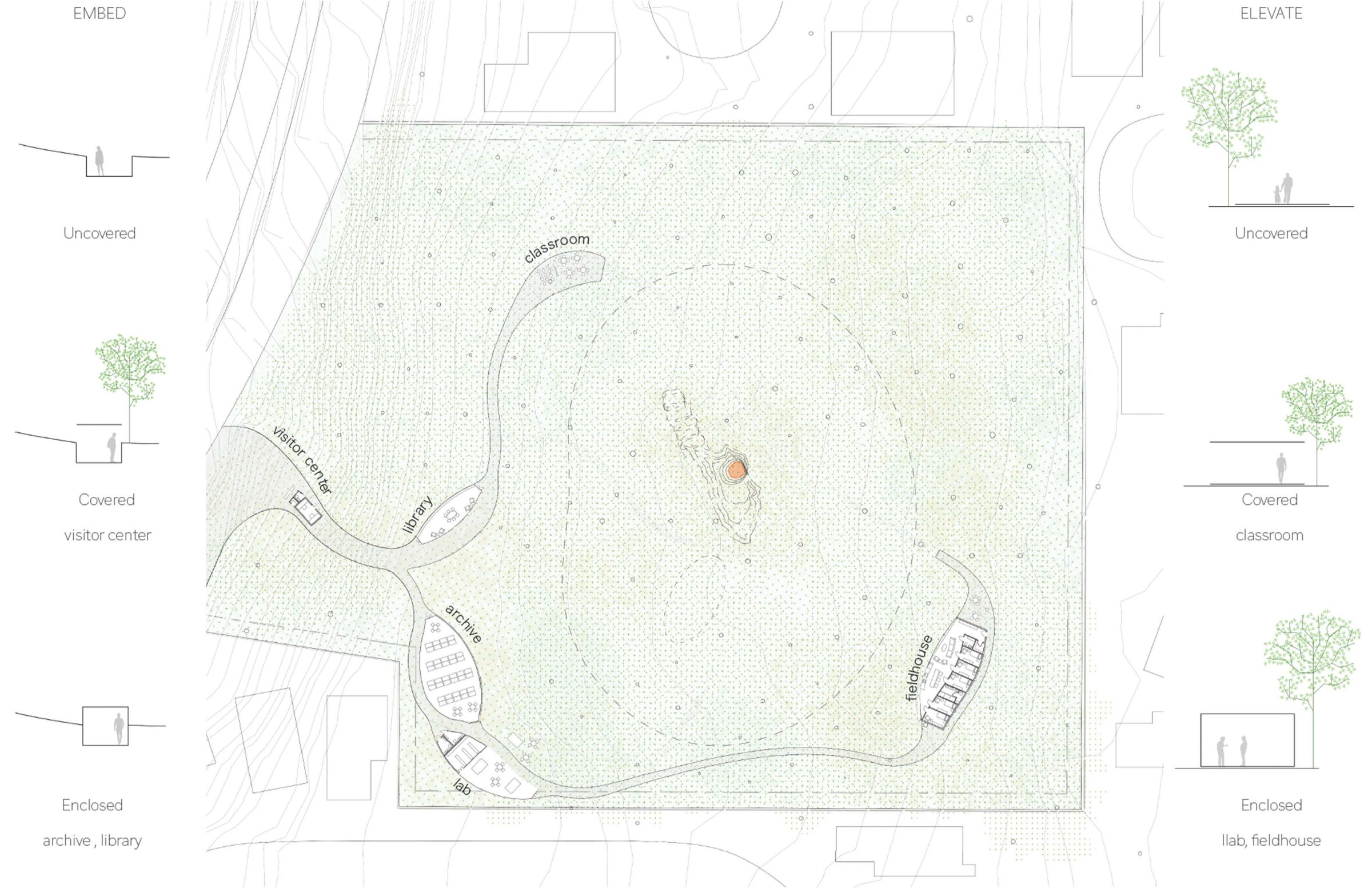Thesis Highlights
"Underland"

Malina Pickard, 2022
"Underland: Dissolving Space into Landscape"
Dematerialization, the curated reduction in quantity and visual impact of materials, can connect architectural space to the immaterial, temporal qualities of a surrounding landscape to advance spatial-visual continuity and limited disruption within sensitive sites. The Friesenhahn cave in San Antonio, Texas requires this light touch and low impact due to its sensitive site conditions including fragile ground conditions and invading suburban context.
This project explores the techniques and tools to achieve dematerialization. The study continues to investigate why we utilize reduced material palettes and why continuity between interior and exterior spaces is important. The project looks at these questions in the case study of a sensitive site, Friesenhahn Cave, challenging the project to approach in a conscious and controlled way while still pushing the boundaries of the built environment.
The design is composed of three components: the path, the program, and the canopy. The path adapts the landscape, following the natural topography. The path then expands in locations of clearing and site importance to allow for the program. The canopy then lays on top of this program to provide the roof plane, shading, and defined space from the exterior. With thin supports holding the canopy, the project gives the illusion of floating, furthering the concept of low impact on the site.
The project posed the initial challenge of marrying the representation, the project, and the concept. Ultimately this challenge allowed the project to be pushed further and become more cohesive in argument. Learning to distill precedent representation research down to the concept, then applying those concepts to the design was how the design was achieved. The process and product of dematerialization are rooted in the connection between the built design and the representation. Both are needed to achieve the cohesive project and the goals of connecting architectural space to the immaterial qualities of a surrounding landscape, advancing spatial-visual continuity.
WORK






